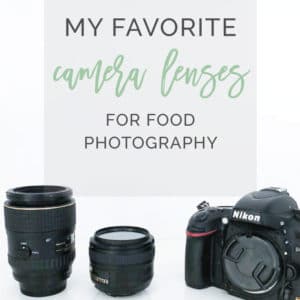Getting equipment for food photography can be overwhelming, to say the least. Not to mention how expensive everything can get! Here I list my 2 favorite lenses for capturing stellar food photos!
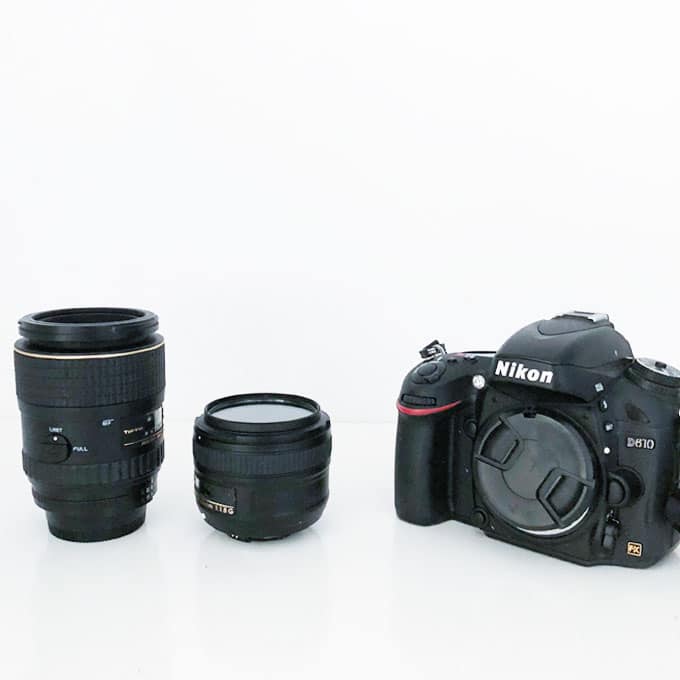
When I think of photography, I like to think of it as part science, part art. Yes, there is a science to operating a camera, but the results can be completely subjective. Therefore; these lenses are MY FAVORITE which may not be the same case for other photographers.
It’s important to note that you can rent camera equipment before purchasing which may be a good option since lenses can be expensive.
Now before I get into the lens, I want to take a brief moment to go over some important factors to consider when thinking about purchasing a lens.
Crop vs Full Frame
Crop and full frame are not referring to a camera lens, but the camera body itself! Step 1 is to identify what type of camera you own. I shoot with a Nikon D610 which is a full frame camera. Prior to this, I used a Nikon D3000 which is a crop frame.
Okay, so now you know what camera you have (I hope!) A quick Google search can help with that. But what exactly is crop and full frame?
Think about staring straight on into an open valley. You can see everything in front of you as well as in your peripherals. This is full frame.
Now take your hands and block the sides. Your peripherals are now blocked and you can only see what is directly in front of you. This is a crop frame.
Yes, full frame cameras are typically more expensive, but they are more natural to the eye. Here’s a diagram that will give you some visual context:
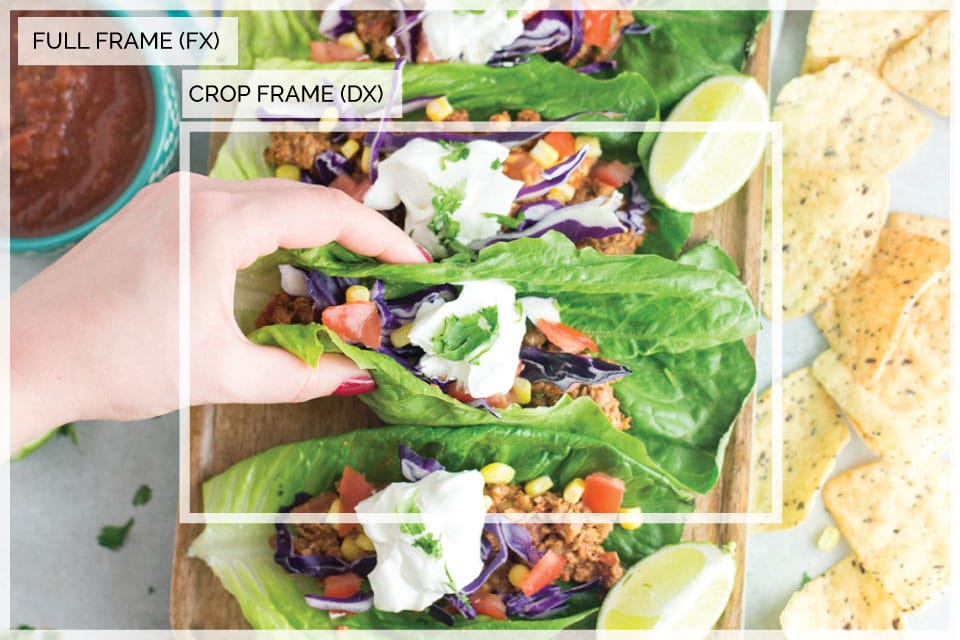
Prime vs Zoom
Prime (or fixed) means that the lens does NOT zoom. If you want your subject closer, you need to move the camera closer.
Zoom (obviously) means zoom. You can zoom the lens in to get closer to your subject.
Okay, so why would you choose a prime lens over a zoom lens?
Prime lenses tends to produce crisper and clearer photos. A zoom lens comes in handy when shooting moving subjects like sports or animals, but for us foodies, our subjects are still and closer. I recommend prime lenses for food photography.
How to read a lens name:
So you’re looking up lenses and the names are like a million letters and numbers looking like some type of Morse code, yeah? Let’s debunk these crazy names!
Here’s an example of a Canon lens:
Canon EF 50mm f/1.8 STM Lens
- Canon: brand
- EF: Refers to the focus type
- 50mm: Means it’s a prime lens. If this number was a range, like 18-55mm it would mean it’s a zoom lens
- f 1.8: Refers to the aperture. This is the lowest aperture number this camera goes to.
Here’s an example of a Nikon Lens:
Nikon AF-S FX NIKKOR 50mm f/1.8
- Nikon: brand
- AF-S: Refers to the focus type
- FX: Means this is for a full frame camera
- 50mm: Prime lens
- f 1.8: Aperature
One note for Nikon users (such as myself):
Nikon will have FX or DX listed on the lens. FX is for full frame cameras and DX is for cropped cameras. Not to get too technical, but you can use an FX lens on a crop camera but NOT vice-versa. If you have a crop frame camera and you think you’ll upgrade in the future, purchase FX lens that will grow with your body.
To learn more technicalities, read this article.
Note: If you use a full-frame lens on a crop camera, it will “zoom” in on the images more so take that into consideration. A 60mm lens will be more like a 100mm lens on a crop camera.
Now that I have your brain spinning, let me get into the two lenses I use.
My 2 favorite camera lenses:
1. Nikon AF-S FX NIKKOR 50mm f/1.8
AKA the “nifty fifty” this is the most common lens for food photographers. Some hate on it, others swear by it. I personally LOVE this lens.
I use this lens for a majority of my photos. It’s excellent for overhead shots as well as other angles.
If you want to learn more about angles for food photography, check out this useful article.
Example of an image using the 50mm lens:
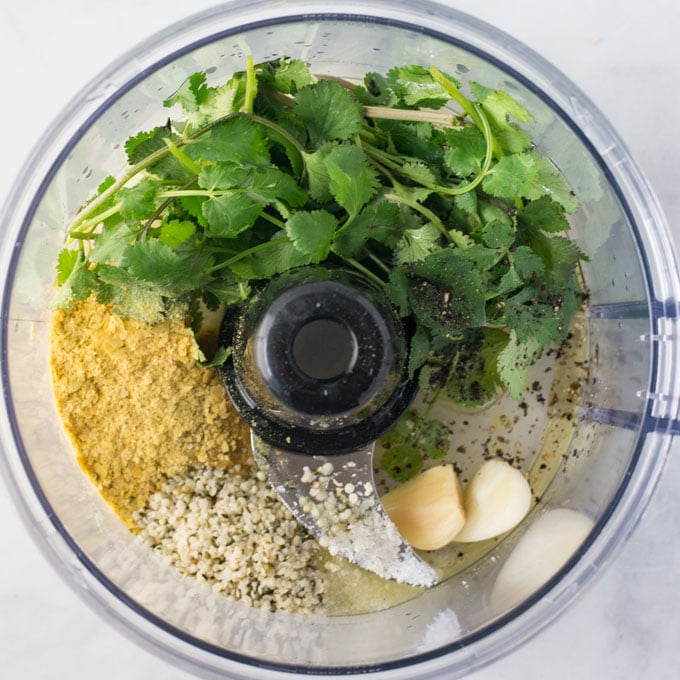
2. Tokina AT-X 100mm f/2.8 PRO D Macro Lens
Great for 45-degree shots and super intimate close-ups
Example of an image using the 100mm lens:
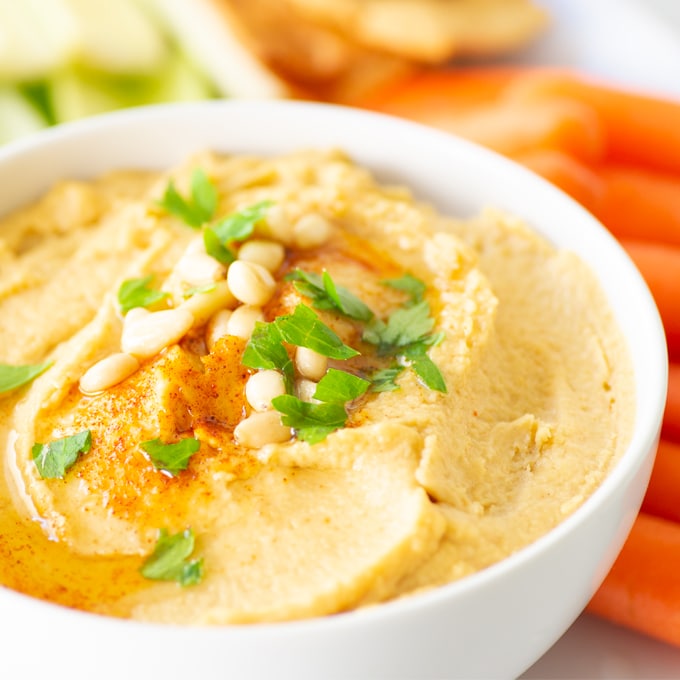
Comparison with the two:
No two lens are the same. Here’s an example of how each lens takes a photo using the same aperture, shutter speed, and angle:

These photos are unedited; however, the one taken with the 100mm lens is more zoomed in and brighter. This lens lets more light in which might be useful if you find yourself shooting in low light settings.
In Summary:
I know I threw A TON of info at you, but here are the key points to take away:
- Determine if your camera is a full frame or crop sensor
- Prime lenses are great for food photography. They do not zoom, but the images are typically crisper and clearer
- 50mm aka “nifty fifty” is the most popular lens for food photographers. Great versatile camera
- 100mm macro lens is great for 45-degree angles and sexy closeups
- Consider renting a lens before you buy!
Please note this post may contain affiliate links which do not impact the cost to you but gives me a small commission. Thank you for your support!
Related:
How to Make a Photography Light Box
3 Best Angles for Food Photography
Color Theory for Food Photography
Food Photography Backgrounds for all Budgets
What camera do you shoot with and what are your favorite lenses for food photography? Let me know in the comments below!

